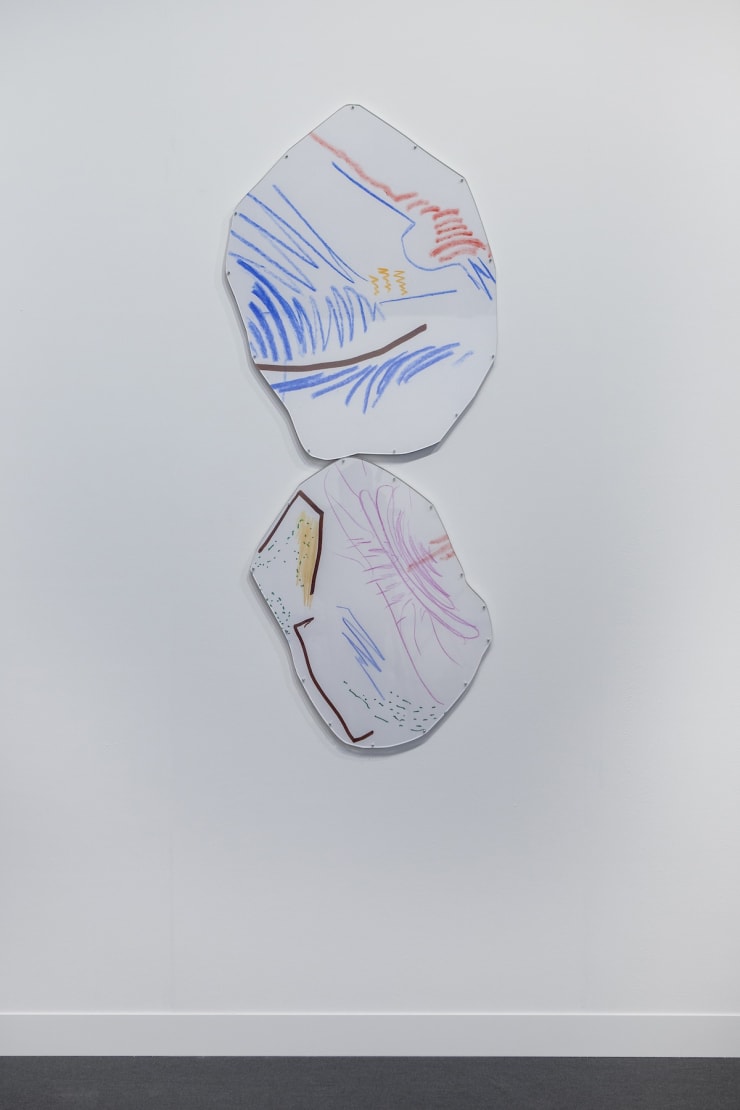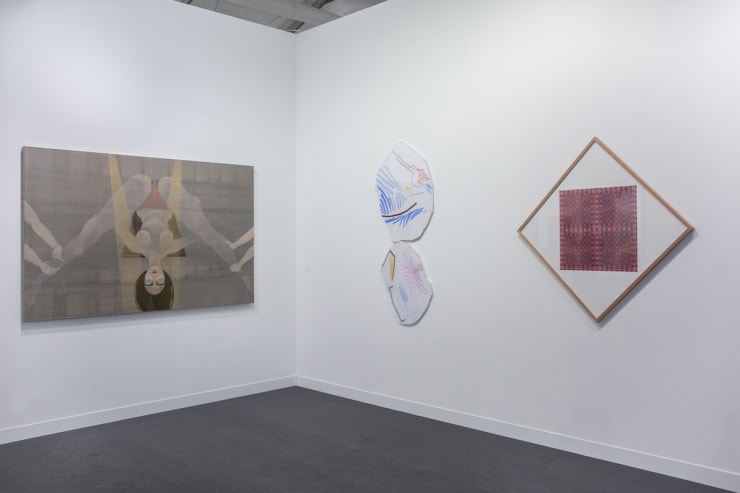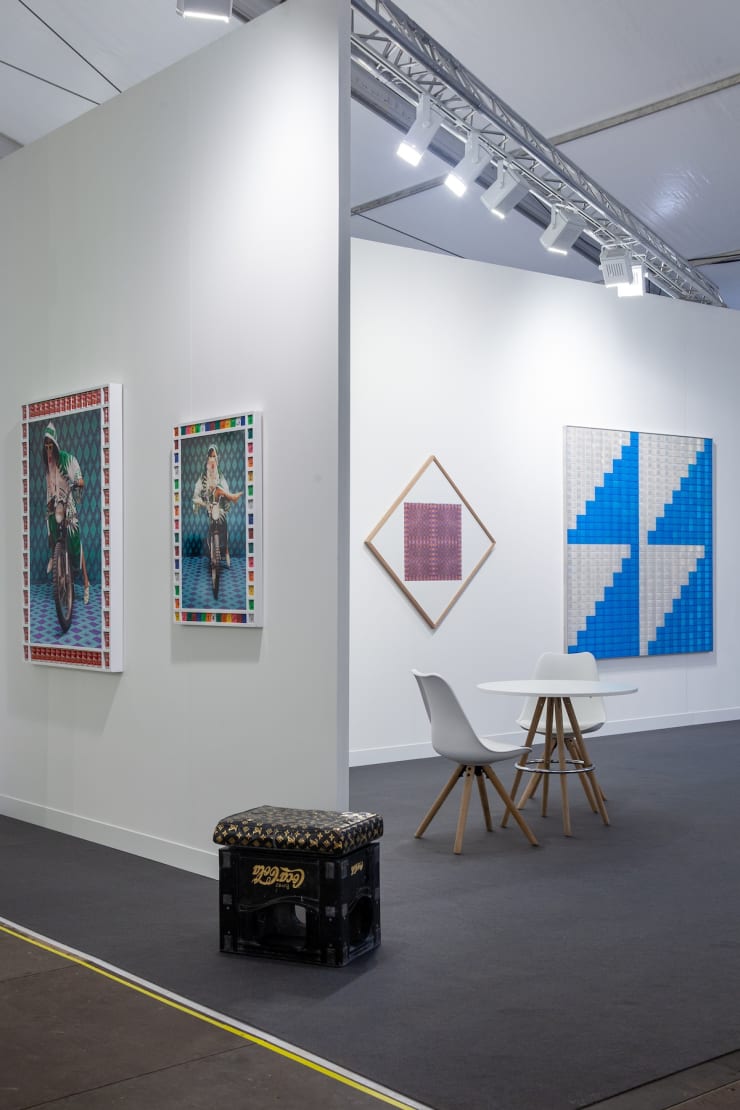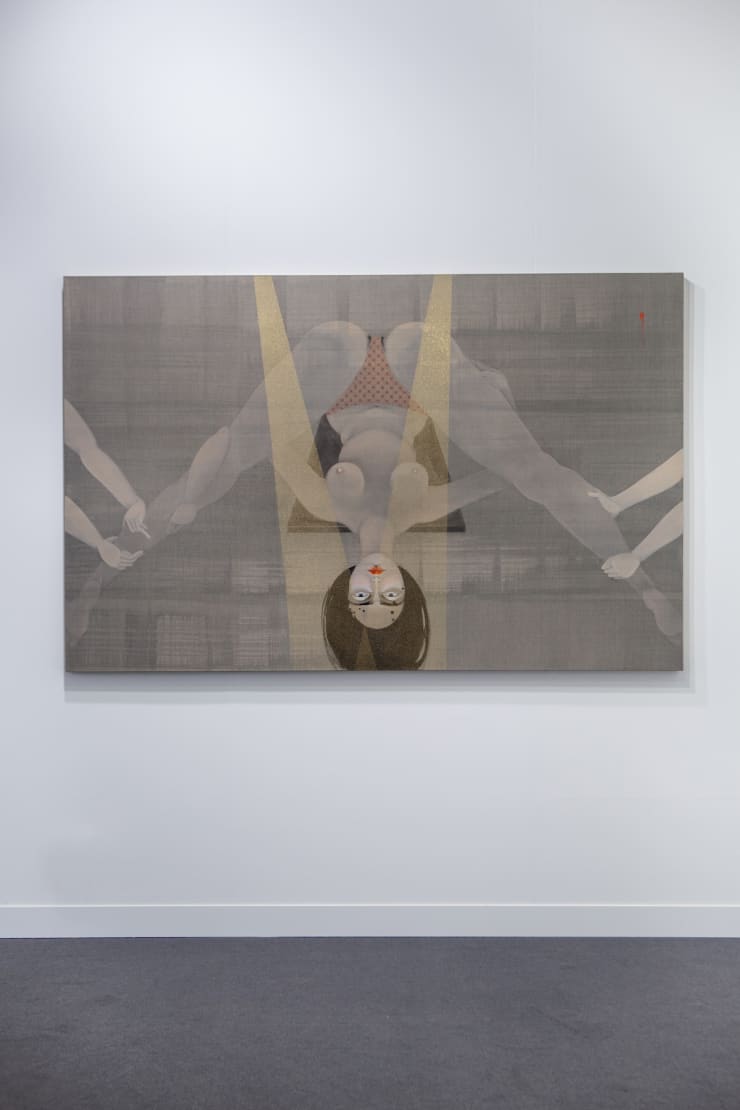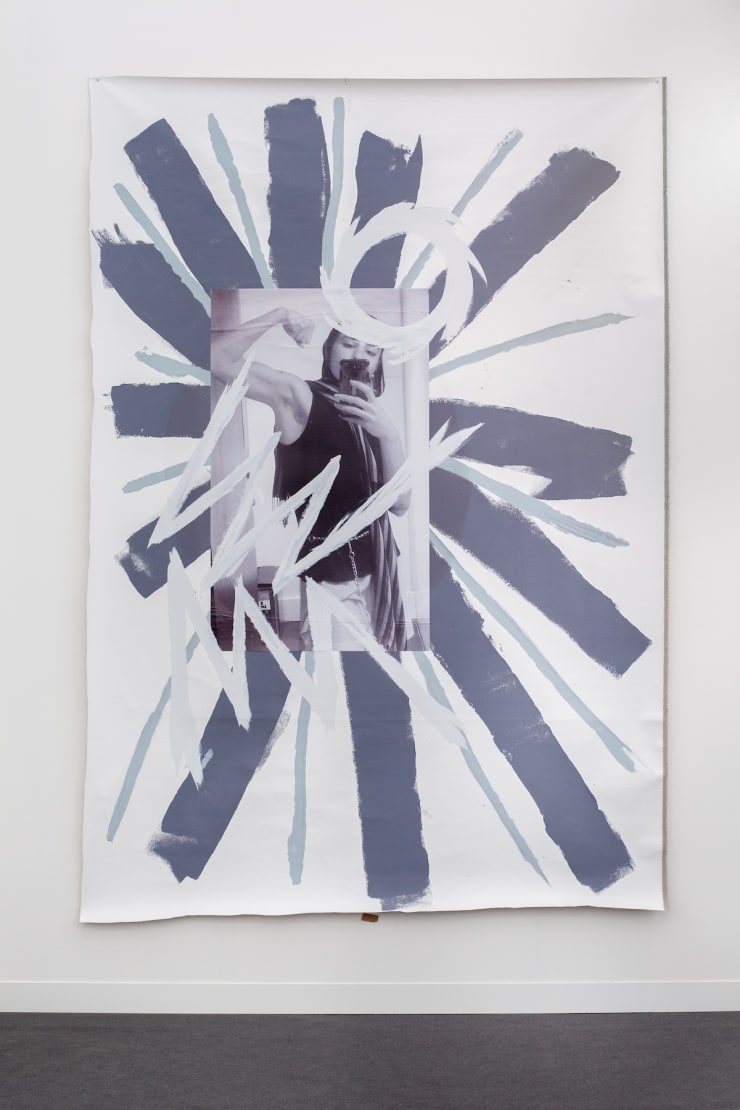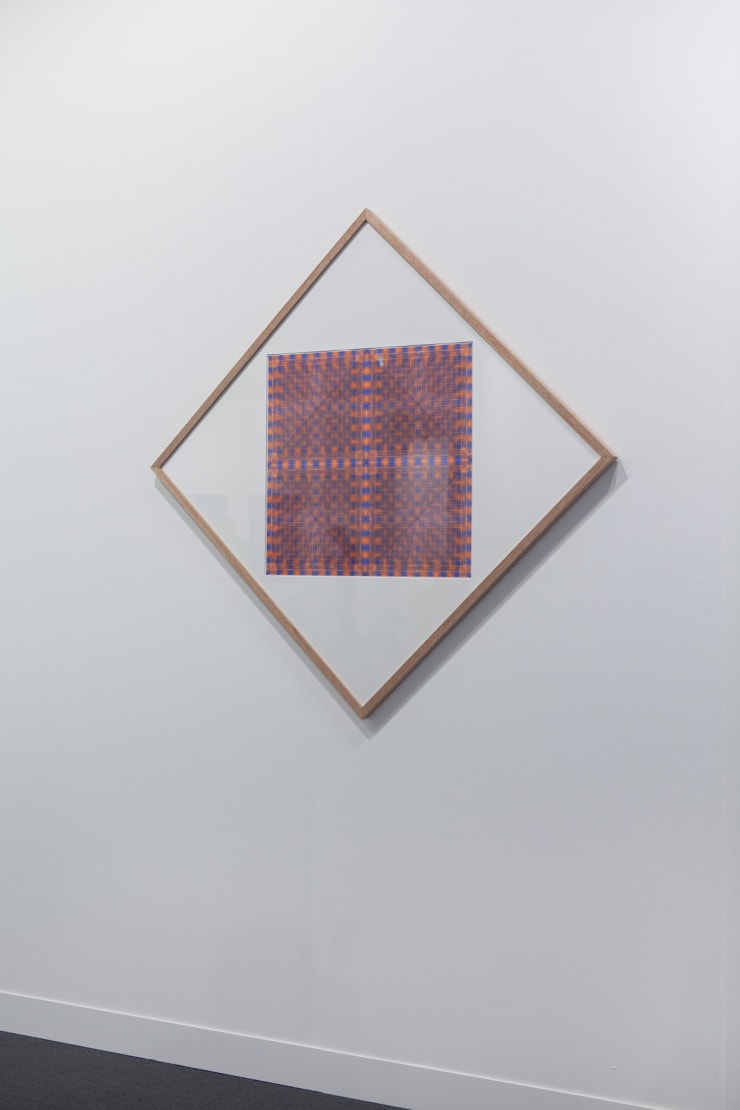The Third Line returns to Frieze London with a group presentation of new works by Hayv Kahraman, Nima Nabavi, Rana Begum, Sara Naim, Slavs and Tatars and Sophia Al-Maria.
In her latest series, Hayv Kahraman contorts the bodies of her female heroins into impossible postures, synonymous of otherness and the resulting social pressures. Stretching, twisting and bending to what seems the breaking point, Kahraman’s contortionists bear the pain and pressure, their apparent submissiveness turning into resistance and rebirth.
Influenced by geometric abstraction, numeric symbolism and their connection to the natural world, Nima Nabavi creates meticulous grids of ink on archival paper and in so doing, reveals the inherent beauty of our shared reality. Much like in the natural world, Nabavi’s process resides in the use of one fundamental, irreducible element repeated into a larger motif.
Rana Begum’s new reflector works describe our ever-evolving built environment. Inspired by the straightforward patterns and vibrant colors of roadsigns and the way in which their surfaces shift as the day progresses, these works too shift and change as light exposure varies and as viewers walk around them.
Pain - Sara Naim’s new body of work, is composed of sculptural photographs that explore the materialisation of emotions and bodily sensations. During various Vipassana meditation sessions that the artist guides, she asks the sitters to draw their impressions which she then detail-selects, magnifies, prints and shapes to inform her photographic sculptures.
With an iteration currently on view at the 58th Venice Biennale’s Arsenale, as part of a new installation titled Dillio Plaza, Slavs and Tatars’ Salamoia (2019) sees the traditional water bottles replaced with an amameh or turban. It nods to the water-fountains often found outside Shi’a shrines and mosques, as votive and ritual sources of water in homage to the 7th century Battle of Kerbala in the desert and the dehydration which followed.
Sophia Al-Maria’s new work belongs to Apotropaia—a series of charms of apotropaic collages. Al-Maria has used protective charms to stamp the back of video works since her first solo show at The Corner House in Manchester (2014) and her new work is the latest iteration of this part of her practice. It is of the same format as the one on the back of Al-Maria’s Tate Britain installation Beast Type Song. An asterisk, an image, a symbol to seal. In the Tate Britain version of the work, she shields the space from Francis Bacon’s depiction of the vengeful goddesses, the Eumenides with the outstretched palm of Yumna Marwan (one of the film's protagonists). For Frieze London, this collage on canvas charm becomes a stand-alone work of protection for and from whatever situation it is placed in.



